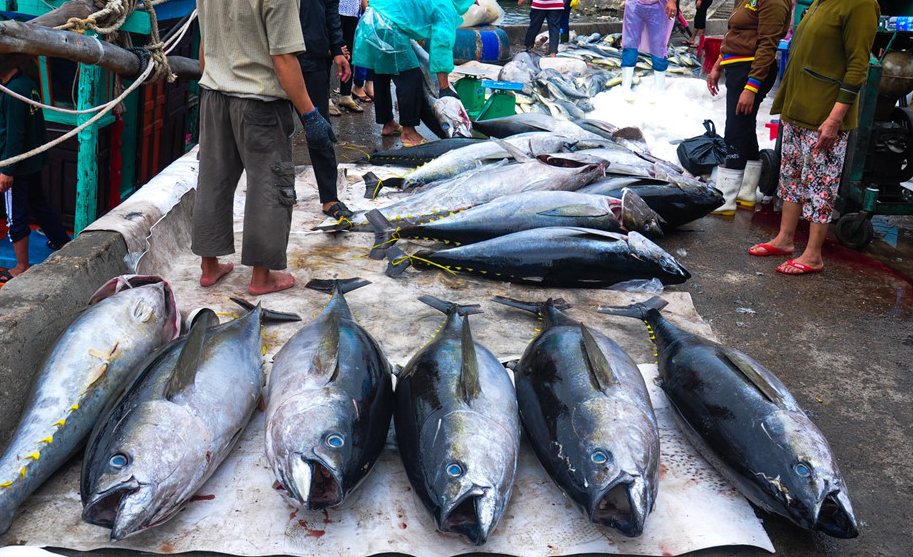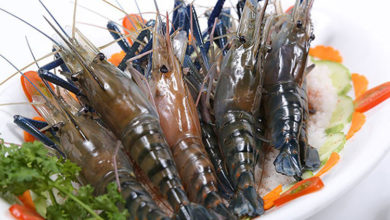Vietnam’s August 2024 seafood export report: Trends in growth and present challenges
In August 2024, Vietnam's top seafood export products included white leg shrimp, pangasius, tuna, black tiger shrimp, and squid.
 Photo credit: Freepik
Photo credit: Freepik
Notably, squid exports continued to decline, dropping over 9%, while other products showed promising growth: white leg shrimp rose by 19%, pangasius by 12%, and black tiger shrimp by 6%. Reduced fishing activity and regulations against illegal, unreported, and unregulated (IUU) fishing have left processing companies struggling to find sufficient raw materials for squid.
August is typically a month when companies ramp up their efforts, but tuna exports only increased by 3% after experiencing double-digit growth (14-56%) for the first six months of the year, excluding the month of February due to Tet celebrations. This slowdown indicates that the tuna fishing and export sector is beginning to feel the impact of regulations regarding the minimum size of tuna set forth in Decree 37, which has prevented companies from purchasing tuna larger than 0.5 meters for processing.
In the first eight months of the year, white leg shrimp generated the highest export revenue, reaching $1.76 billion, an 8% increase compared to the same period in 2023. Exports of white leg shrimp to the EU experienced robust growth, surging nearly 18%. Among the major consuming markets, Germany, the Netherlands, and Belgium recorded double-digit growth rates, increasing by 12%, 24%, and 23%, respectively, compared to last year. Other markets also saw significant gains in imports of Vietnamese shrimp, with exports to Denmark increasing by 34%, Spain by 64%, Sweden by 24%, Ireland by 63%, and Romania by 59%.
The United States remains the largest market for Vietnam’s white leg shrimp. However, exports to the U.S. in the first eight months of the year only grew by nearly 7%. Exports to Japan saw modest growth of 2.4%, while exports to China remained unchanged compared to the previous year.
According to forecasts presented at the Global Shrimp Forum (GSF) in Utrecht, Netherlands, shrimp imports in 2024 are projected to decline in the two largest markets, China and the United States, despite prices hitting record lows. In Europe, average prices are also at a record low, but at least the volume of imports is on the rise. European import volumes are expected to increase by 3%, reaching 330,337 tons in 2024, with a general trend of reducing imports from Asia and shifting to Latin America, particularly Ecuador.
Black tiger shrimp remains in the top five seafood exports in the first eight months of the year, though its export value decreased by 6% year-on-year, totaling $295 million. Vietnamese black tiger shrimp maintains a solid position in Japan and the EU, with exports to these markets increasing by 7% and 10%, respectively, compared to last year.

With nearly $1.3 billion, pangasius contributed the second-largest export revenue in the first eight months of the year, representing a 9% increase year-on-year. The U.S. market remains the most promising destination, with revenue of $226 million, up 23% from the previous year. Preliminary results from the anti-dumping tax investigation on pangasius (POR20 period from August 1, 2022, to July 31, 2023) indicated that eight companies would not be subject to the tax, providing an additional incentive for businesses to target the U.S. market more aggressively in the near future.
Conversely, pangasius exports to China and the EU experienced slight declines. Although China is the largest importer of Vietnamese pangasius, low import prices (ranging from $1.9 to $2 per kg) have hindered the growth of exports to this market. The challenging economic situation in China has made importers more cautious. On the upside, pangasius exports to South American markets, such as Brazil and Colombia, have seen remarkable growth, with increases of 28% and 44%, respectively, along with an 18% increase in exports to Mexico.
Tuna exports for the first eight months of the year reached $648 million, a 48% increase, with canned tuna exports leading the way with a 19% rise. The raw material supply for tuna production in the first half of the year primarily came from inventory at the end of the previous year and the early months of the current year. Projections indicate that tuna exports may decrease in the latter months of the year and in 2025 due to insufficient raw materials for processing.
In addition to raw material issues, Vietnamese squid exports are also affected by reduced demand amid a slowly recovering global economy. By the end of August, squid exports had dropped by 6.5%, totaling $220 million, with only the Chinese market showing a 22% increase in imports of Vietnamese squid. Meanwhile, octopus exports experienced a slight increase of 2.5%, reaching $185 million.
With a growth rate of 14.5%, seafood exports in August provided a positive signal for the seafood industry, fostering confidence that 2024 will yield better results than 2023. Nevertheless, significant challenges persist, such as the yellow card for IUU fishing affecting the EU market and anti-subsidy taxes on shrimp in the U.S. A conclusion regarding these two issues is expected by the end of October, which will clarify the outlook for the seafood sector for the remainder of 2024 and into 2025.
VFM (data source: VASEP)






